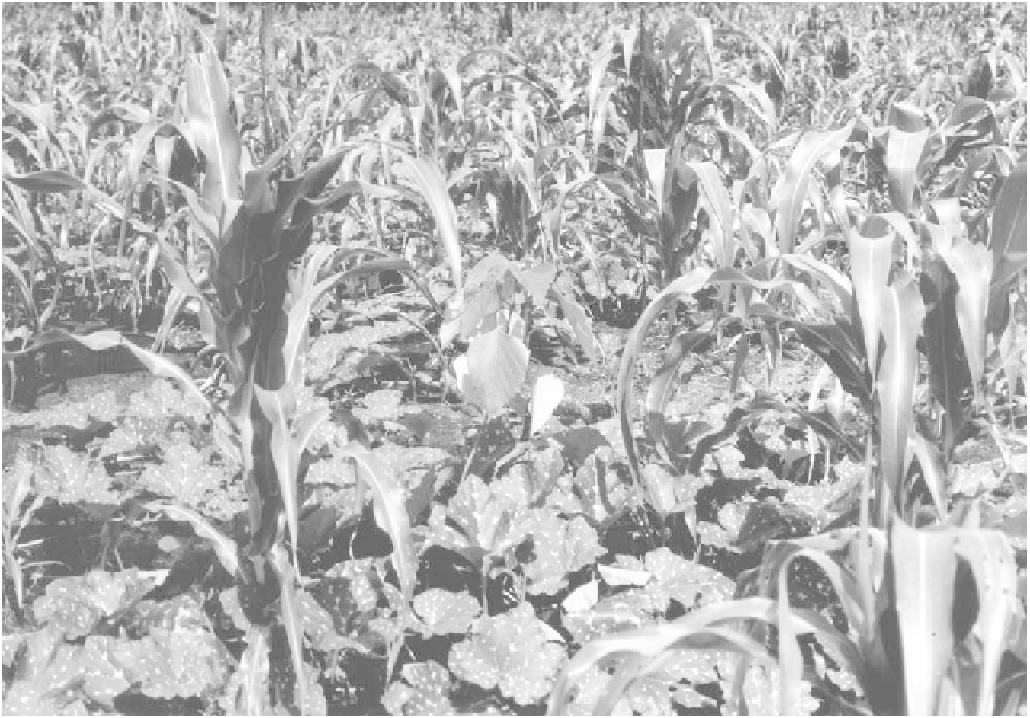Agriculture Reference
In-Depth Information
5.
Once soil conditions improve sufficiently, the
ground is prepared for planting longer-lived
perennials, especially orchard or tree crops,
with annual and short-lived perennial crops
maintained in the areas between them. While
the trees are in their early growth, they have
limited impact on the environment around
them. At the same time, they benefit from hav-
ing annual crops around them, because in the
early stages of growth they are often more sus-
ceptible to interference from the more aggres-
sive weedy
r
-selected non-crop species that
would otherwise occupy the area (Figure 17.2).
is achieved. This end point could be modeled
after the structure of natural ecosystems of the
region. Once it has been achieved, the farmer
has the choice of maintaining it (possibly as an
integrated system with livestock) or introducing
controlled disturbance in ways that return the
agroecosystem, or selected parts of it, to earlier
stages of succession.
It is useful to examine how net primary productivity and
standing biomass change over time when an agroecosystem
is allowed to progress through the stages described in
Figure 17.3. These changes will be similar to those that
occur in a natural ecosystem as it undergoes succession after
disturbance; a general model for these changes over time is
presented in Figure 17.4. NPP increases rapidly during the
earliest stages of agroecosystem development, with most of
that increase being available as harvestable products. A time
interval in the early stages of successional development
(e.g., stages 2 and 3 in Figure 17.3) will show the most rapid
increase in net primary productivity available during the
6.
As the tree crops develop, the space in between
them can continue to be managed with annuals
and short-lived perennials, using the agrofor-
esty approach described below. Larger livestock
can be introduced at this point for vegetation
management, enterprise diversification, and
better nutrient cycling (Chapter 19).
7.
Eventually, once the trees reach full develop-
ment, the end point in the developmental process
FIGURE 17.2
Seedlings of the tree Gmelia arborea intercropped into a corn-squash planting in southern Campeche, Mexico.
The practice of initiating a tree crop system in an annual system is called
taungya
.

Search WWH ::

Custom Search